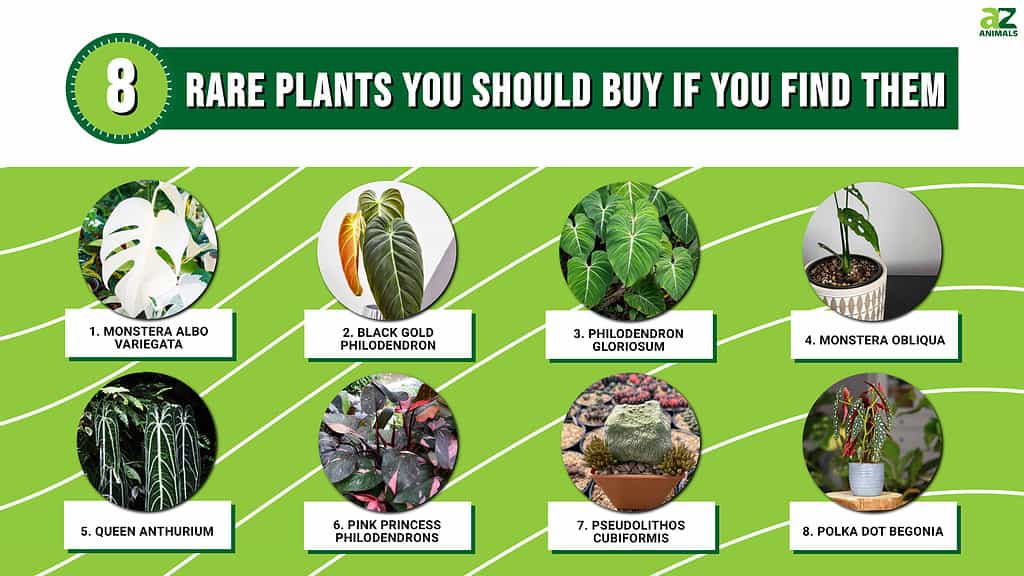
There is nothing better than getting a new plant and bringing it home. And usually, the rarer, the better. But how can you tell if a plant is good enough to buy? How do you identify rare and uncommon plants, especially when many of the sales are online? Follow along to discover 8 rare plants you should buy if you find them.
1. Monstera Albo Variegata

Monstera albo variegata is a rare and beautiful showy plant worth the cost.
©Natalia van D/Shutterstock.com
The first beautiful and rare plant on our list is the monstera albo variegata. Have you ever searched for this plant? If you have, you may have noticed just how diverse prices are for the plant. One cutting can easily cost over $50. This plant is hard not to look at with its eye-striking variegated white and green leaves. Although rare indoors, monstera albo plants also produce lovely white flowers in the right climate. Although a favorite for many, like other houseplants, it’s toxic to pets.
Where to Find Monstera Albo Variegata
Thankfully, there aren’t many plants that look like the monstera albo, so it’s relatively easy to identify. While you can try to purchase a monstera albo in nurseries and garden centers, you won’t have much luck. Instead, search for reputable plant sellers online. One of the most popular sights to purchase monstera albo cuttings and live plants is Etsy. Always check the reviews though before purchasing this plant.
Caring for Monstera Albo Variegata
If you’re lucky enough to own this rare plant, it’s a good thing to know how to take care of it. Originally from Central America, these lovely plants need at least 6 to 7 hours of indirect bright light. These showy houseplants also need well-draining and highly nutrient soil to thrive. Too much water or poorly draining soil can cause root rot.
Apart from light and soil, this plant needs a specific temperature and humidity level. Your monstera albo variegata needs at least 60% humidity. This can be hard to achieve when growing indoors and may require a humidifier.
2. Black Gold Philodendron
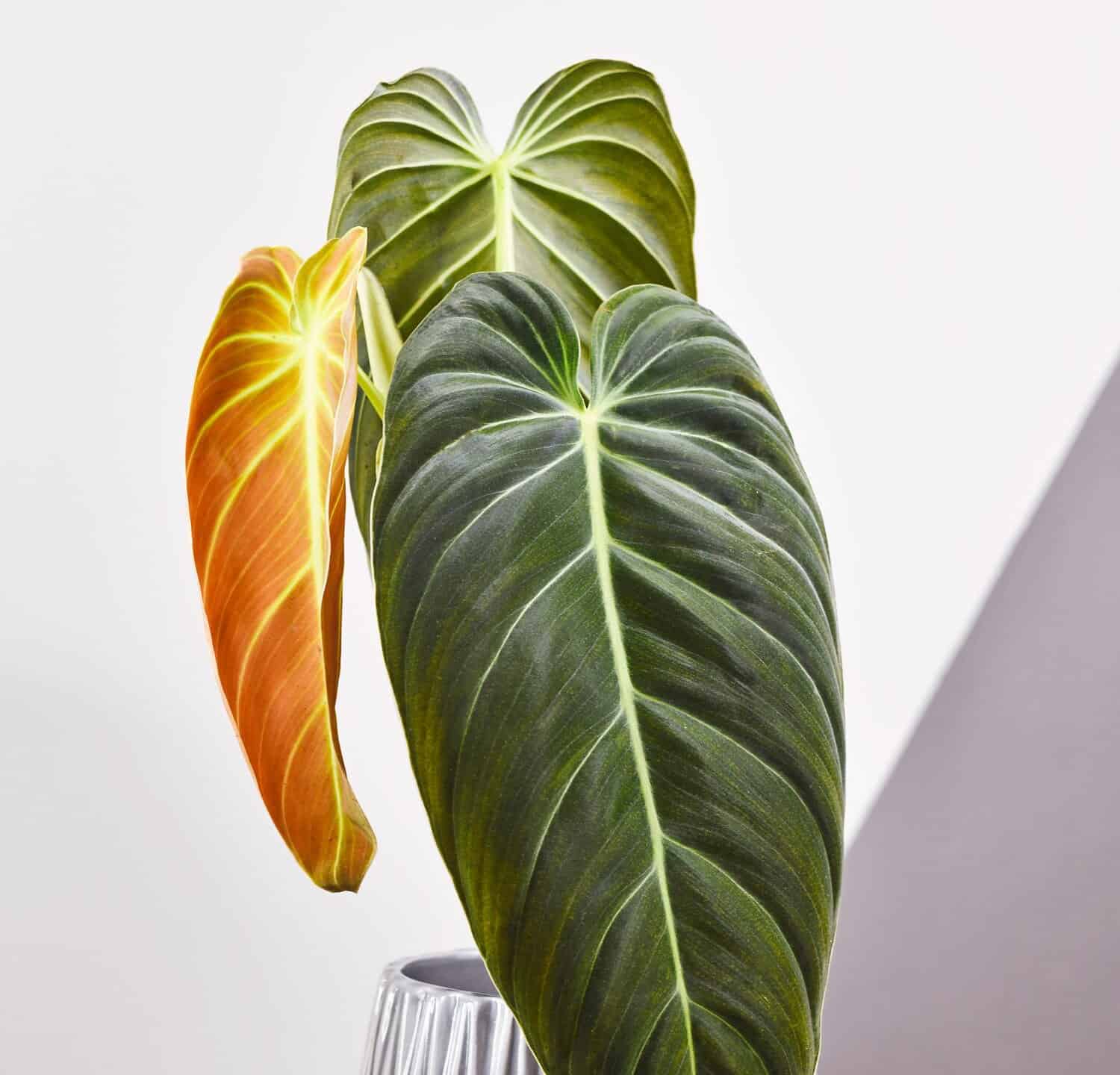
Black gold philodendrons produce large and velvety leaves.
©Firn/Shutterstock.com
The next rare plant you should buy if you run into it is the black gold philodendron. This beautiful, showy, and large houseplant is sought after, but hard to find. Although known as the black gold philodendron, the plant isn’t entirely black or gold. Instead, its leaves are dark, long, and velvety. Black gold philodendrons are climbing plants perfect for showing off.
Where to Find Black Gold Philodendron
While this plant is rare, you can still find it online and in some nurseries, however, it can be expensive! Still, this plant is worth the cost, especially since it’s easy to propagate from cuttings. Black gold philodendrons are best purchased from verified accounts or online nurseries. Always check the reviews before purchasing a rare plant. You can also head to your local Facebook plant swap group or Facebook marketplace to see if anyone close by is selling or trading this rare plant. Some cities also host plant swap and selling days, which can cut down on delivery costs.
Caring for Black Gold Philodendron
Although the plant is rare and in demand, this doesn’t mean it’s difficult to care for. Instead, black gold philodendrons don’t require a lot of additional care. When grown in the right conditions, they can reach up to 5 feet tall and spread 2 feet wide. However, outdoors these plants can double or triple their growth.
Black gold philodendrons need acidic, moist, and well-draining soil. Like other houseplants, too much water brings diseases and root rot, which can slowly kill your prized plant. Black gold philodendrons need indirect bright light and regular watering. Unlike other houseplants, these rare and vibrant plants don’t need extra humidity. They grow well in regular indoor humidity conditions. Although not necessary, you can provide your plant with additional humidity.
3. Philodendron Gloriosum
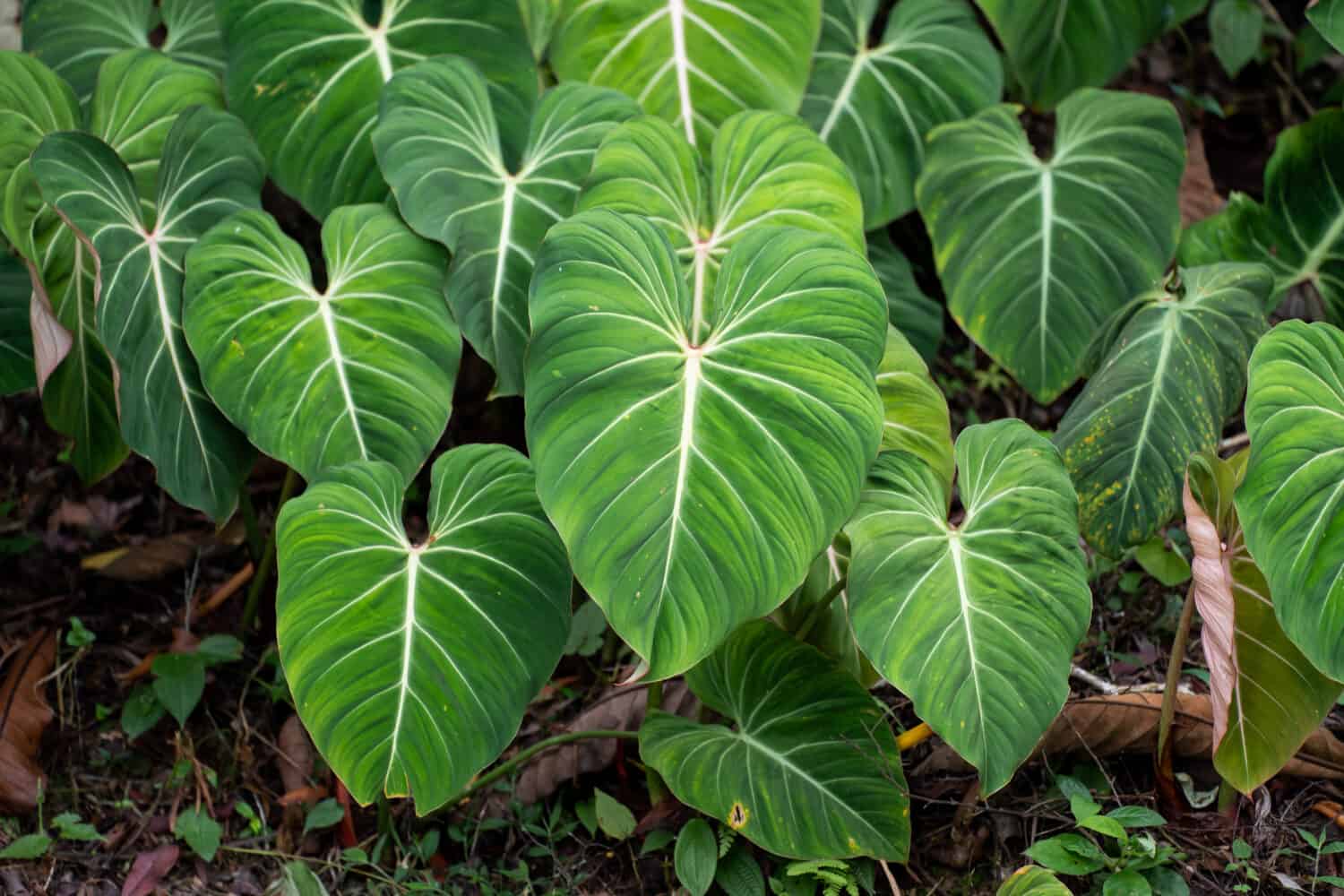
Philodendron gloriosum thrives in high humidity.
©mokjc/Shutterstock.com
Another philodendron plant to make our list of rare plants you should buy is the philodendron gloriosum. Although it shares part of the same name as the previous plant, they look very different. This ultra-rare houseplant is eye-catching with its beautiful and vibrant heart-shaped leaves. This uncommon plant is low-fuss and expensive! Thankfully, once you find this plant, you won’t need to spend hours worrying about it since it’s easy to care for.
Where to Find Philodendron Gloriosum
The philodendron gloriosum is ultra-rare. You won’t find it in large name-brand garden stores or nurseries. Instead, they are mainly sold online by third parties. Some small online nurseries specializing in rare houseplants also carry cuttings or small starter plants. The problem with this plant is it’s not always in stock. If you can, turn on notifications for Etsy sellers and nurseries so you can snag a philodendron gloriosum when it’s back on sale.
Caring for Philodendron Gloriosum
You don’t have to be a master gardener or plant whisperer to care for a philodendron gloriosum. It thrives without extra guidance, but you still need to provide it with the right amount of light, humidity, and water. If you’re growing this plant indoors, it’s best to choose a spot with indirect, but bright light like a west- or east-facing window. Direct sunlight can burn the leaves.
Although you don’t need a humidifier, the philodendron gloriosum prefers high humidity over 50%. This means you can place your rare houseplant in a humid bathroom or greenhouse.
4. Monstera Obliqua
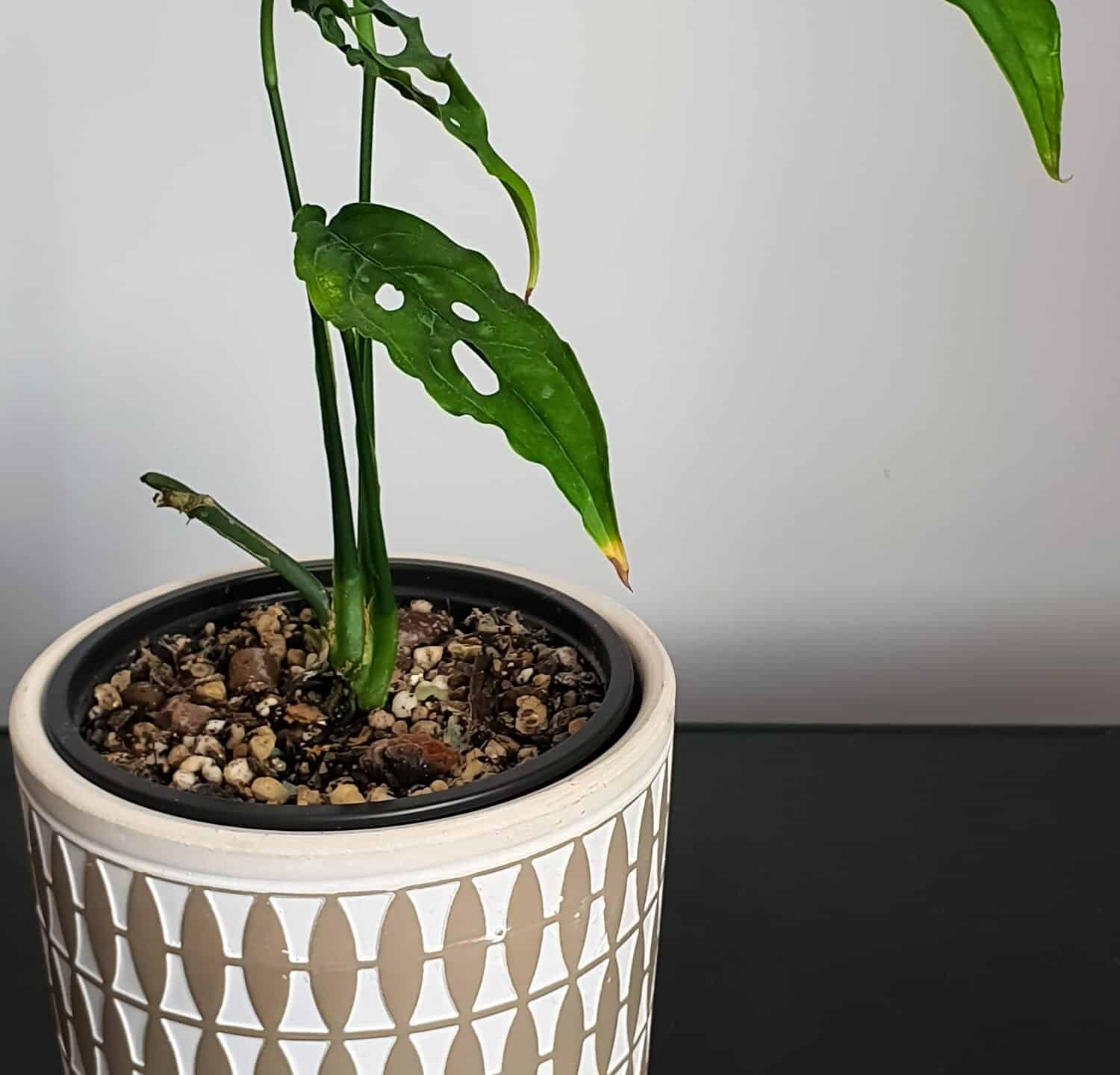
The monstera obliqua is an expensive and rare houseplant with slow growth.
©Dan Gabriel Atanasie/Shutterstock.com
The monstera obliqua is a unique plant widely known for its huge fenestrations. They are so large you can easily place your hand through the holes. Unlike other rare houseplants on this list though, the monstera obliqua is not for beginners! It’s typically only grown by serious gardeners with an absolute passion for high-maintenance houseplants. So, why is it so expensive and rare? The monstera obliqua is a slow-growing plant that is high in demand, which leads to high prices. It’s one of many rare plants you should buy if you find it.
Where to Find Monstera Obliqua
Monstera obliqua is native to Central and South America. Finding it is easier said than done since it grows so slowly. However, there are many top sellers on platforms like Etsy and Facebook Marketplace with limited inventory. The price per plant varies, but can easily reach $200. The good thing about monstera obliqua is that it’s unlike any other plant, so it’s easy to identify in pictures.
While it’s true monstera obliqua is a unique plant, it’s sometimes confused for the Monstera adansonii, also known as the Swiss cheese plant. It’s not uncommon for online shops to mislabel this plant. However, the Swiss cheese plant has smaller leaves and the holes aren’t as large or thin. Swiss cheese plants also grow more quickly.
Caring for Monstera Obliqua
Sadly, the monstera obliqua requires a lot of care and instruction. For example, the plant needs over 7 hours of indirect medium light, which is hard to identify. Too much light can leave the plant with sunburns and damage to the leaves while low light conditions inhibit growth. The soil a monstera obliqua needs though is similar to other houseplants. It needs to be well-draining and high in nutrients. Some master gardeners recommend adding a moisture-increasing medium on top of the soil.
This plant needs a lot of humidity and moisture. But too much watering can drown the plant causing root rot. When caring for this rare houseplant, you need at least 80% humidity with consistent temperatures around 77°F.
5. Queen Anthurium
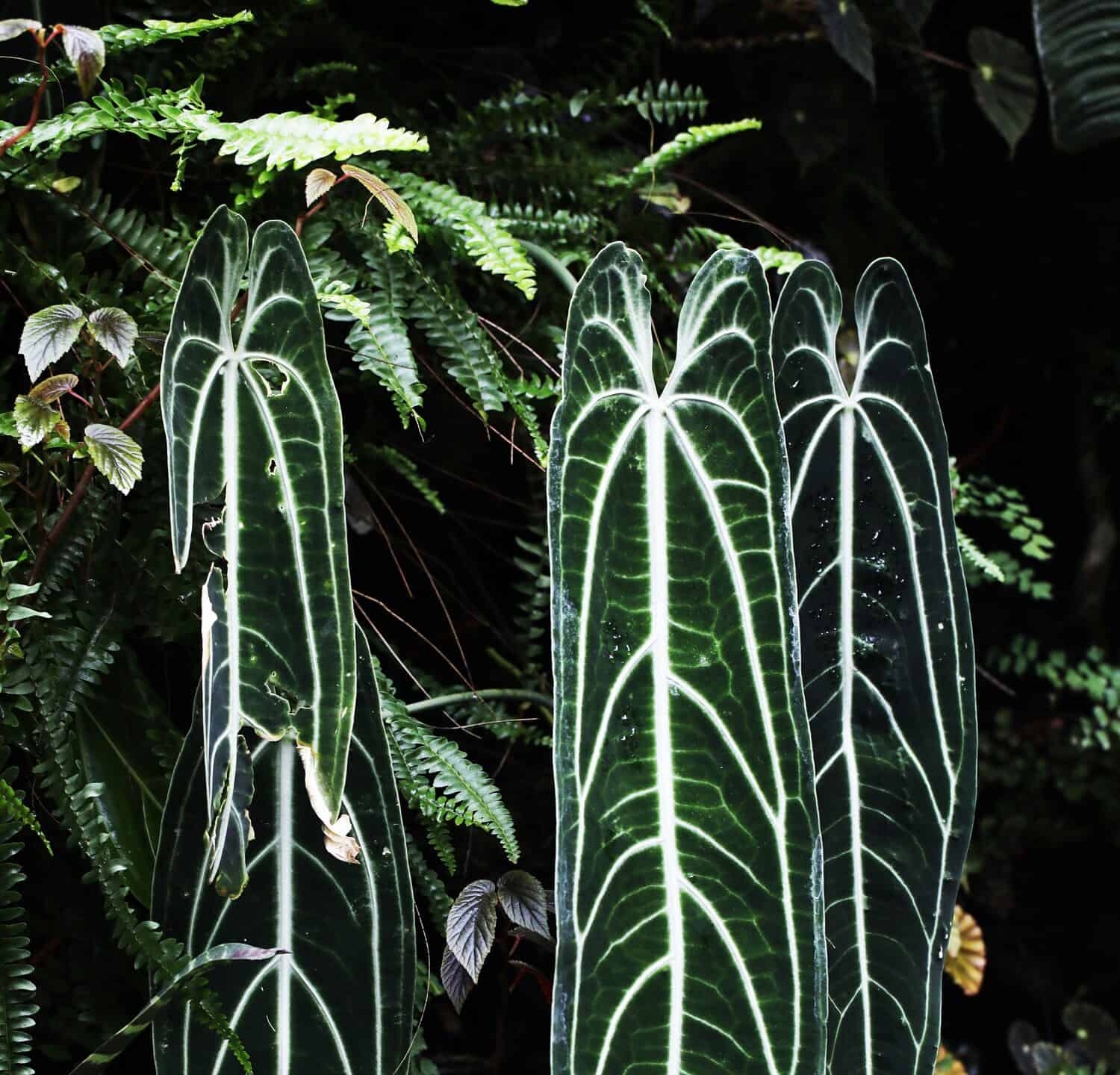
Queen anthuriums are rare houseplants that need high humidity.
©Pavaphon Supanantananont/Shutterstock.com
Another rare plant you should buy is queen anthurium, also known by its scientific name, Anthurium warocqueanum. This extremely rare houseplant is growing in popularity and interest. It’s endemic to Colombia and is best known for its long ovular velvety leaves. They are great for expert gardeners interested in a unique houseplant. This lovely plant is also a fast grower!
Where to Find Queen Anthurium
Your best chance of finding this uncommon houseplant is by looking on Etsy. Many sellers post cuttings and live mature plants. Even the smallest queen anthurium can go for over $60. When looking for rare plants, always check the reviews. Etsy allows you to read reviews and some are accompanied by photos. This is a great feature but isn’t the only thing that protects buyers. Etsy also offers Etsy Protection. Online purchases may be your only option. While queen anthuriums are growing in popularity, they are still extremely uncommon.
Caring for Queen Anthurium
Queen anthuriums are lovely ornamental plants that can grow indoors or outdoors in containers or on the ground. They thrive in high-humidity climates and grow fairly quickly. Your best chance at optimal growth is at least 70% humidity with a consistent temperature of 68-86°F. While you can grow your queen anthurium in a bathroom because of the high humidity, the plant can easily overrun the space.
This lovely rare plant is sun-loving and needs 6+ hours of medium to bright full sun with some shade. Direct sunlight can cause damage to the leaves. Watering depends on the season. However, it’s best to check the first 2 to 3 inches of the soil. If the soil is dry, it’s time for water. In the summer and spring, your queen anthurium may require more water than in fall or winter.
6. Pink Princess Philodendrons
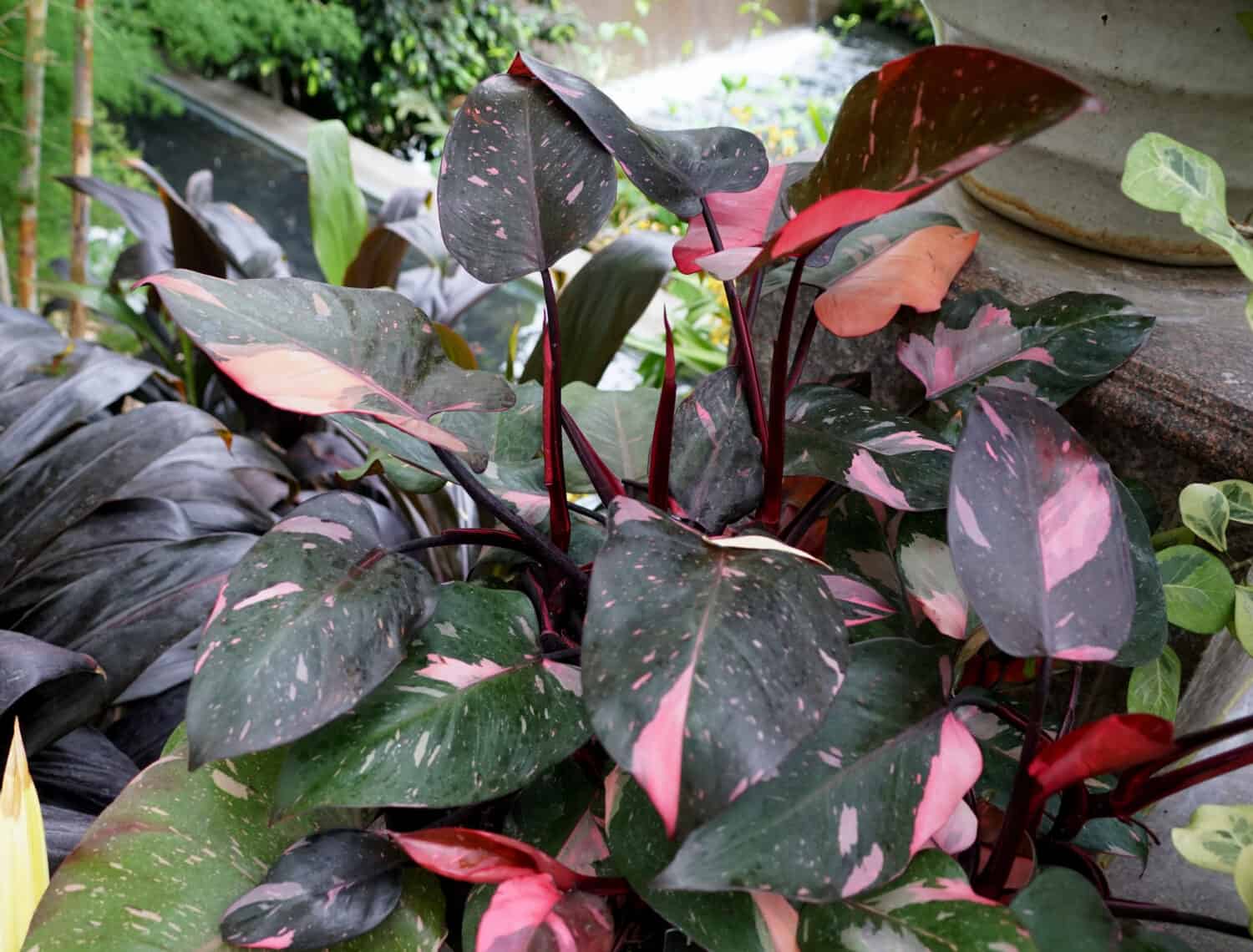
The pink princess philodendron is one of many rare houseplants worth the cost.
©Khairil Azhar Junos/Shutterstock.com
Next on our list of rare plants you should buy is the pink princess philodendron, a vibrant favorite for many houseplant enthusiasts. It’s another native Colombian plant with pink variegation that occurred because of a mutation from hybridization.
Not many plants produce pink or slightly pink leaves. The reason that pink princess philodendron is rare, is because the plant’s iconic colors are never guaranteed. You can’t plant a seed and grow the ‘pink princess’ variety with 100% perfect results. This plant is frequently out of stock and even the smallest plants can surpass $100. However, online you can also find fully-grown pink princess philodendrons for $2,000.
Where to Find Pink Princess Philodendrons
It’s unlikely you’ll find this beautiful pink, grey, and green plant while in your local grocery store or garden center. While they are sometimes in stock in brand-name stores, they are gone just as quickly. Your best shot is to try and find a reputable seller online. Always purchase pink princess philodendrons that are already showing the pink mutation. Some people have been scammed online and received a different philodendron species without the pink.
Caring for Pink Princess Philodendrons
The pink princess is a favorite for many and as soon as you have a cutting or potted plant, you won’t have to spend too much time or effort caring for it. This plant is a perennial that prefers acidic soil and partial sun exposure. Like other philodendron varieties, the pink princess can suffer from too much sunlight, leading to burns in the leaves. Light is a key factor when it comes to variegation. It’s best to grow this plant indoors in a container, away from long hours of direct sunlight. You can also use an LED grow light if you don’t have enough light exposure.
Pink princess philodendrons need airy well-draining soil. While you can buy houseplant soil from a store, you can also add nutrients like orchid bark or perlite. These rare houseplants aren’t frost tolerant and prefer temperatures around 65 and 79°F.
7. Pseudolithos Cubiformis
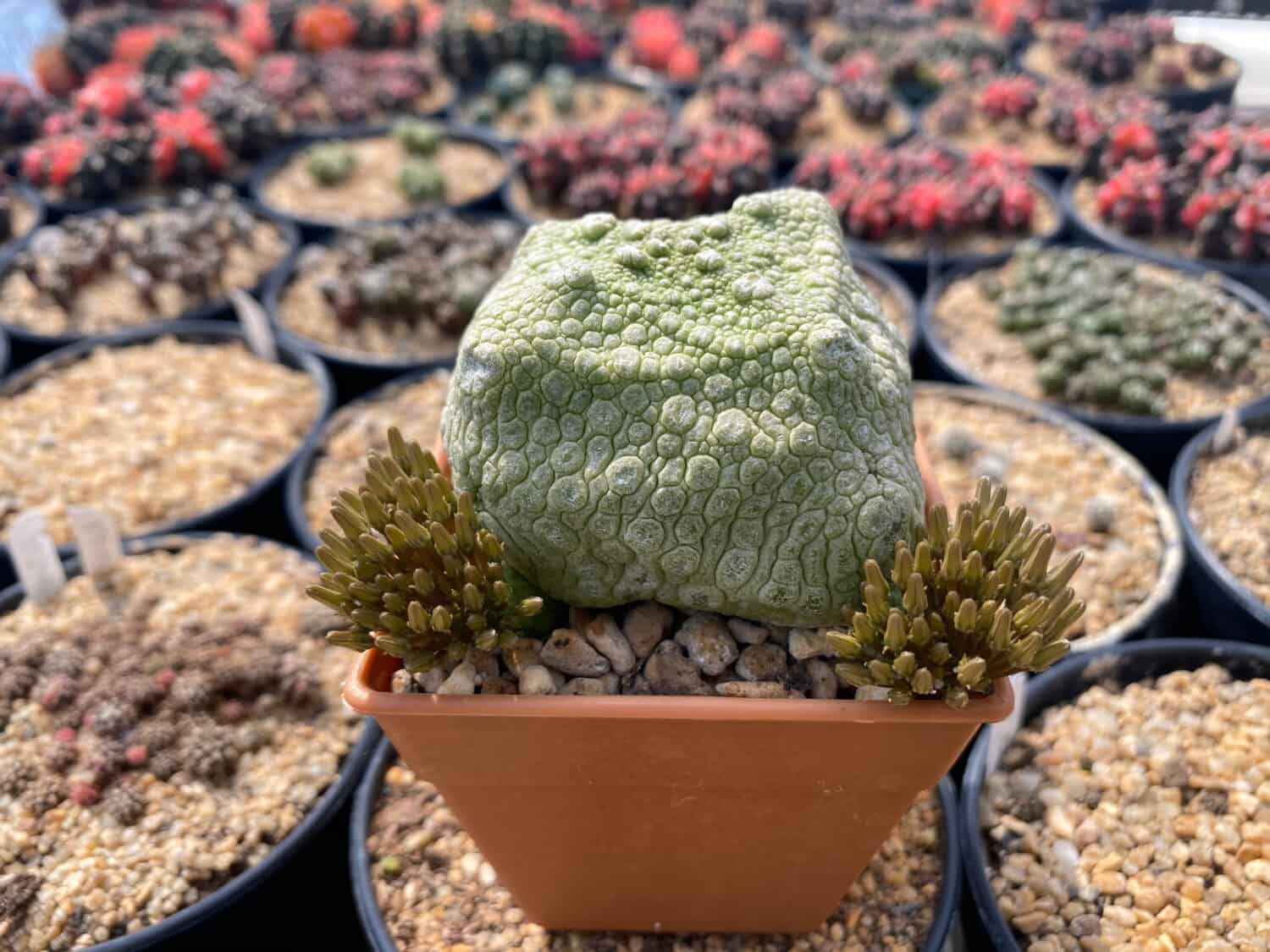
The pseudolithos cubiformis is a rare houseplant that thrives in dry and warm conditions.
©Jah keskowit/Shutterstock.com
Another rare plant you should buy if you find it in stock is the pseudolithos cubiformis, an unusual and strange-looking succulent. It looks like no other cactus and is best known for its cube-like shape. This succulent is a jaw-dropping rare houseplant perfect for small spaces as it doesn’t grow very big. Most only reach about 7.8 inches tall.
Where to Find Pseudolithos Cubiformis
These high-demand succulents are rarely sold by garden stores or nurseries. Instead, you’ll need to order either seeds or a small live plant. Although you can purchase pseudolithos cubiformis on sites like Amazon, it’s not recommended. There are few sellers, and some are scammers with minimal to no reviews. Instead, you have better luck purchasing from a reputable online nursery with reviews and other rare houseplants. While you can grow from seed, it’s tricky and expensive. Some sellers post 5 seeds for over $60. You may want to purchase a plant in a 2 to 3.5-inch pot instead of seeds.
Caring for Pseudolithos Cubiformis
The hardest part about a pseudolithos cubiformis is finding it. The plant though needs minimal care. This small succulent looks almost like granite and is wide. If you’re growing this rare houseplant outside, it’s best to live in USDA zones 11a to 11b. pseudolithos cubiformis succulents are heat-loving plants that need bright direct sun exposure. While you can grow your pseudolithos cubiformis indoors, there’s an increased risk of overwatering and root rot, which is frequent in small containers.
If you want your pseudolithos cubiformis to flower, you should also fluctuate sun exposure as the plant blooms in cooler weather. This plant doesn’t need a lot of water. Instead, only water pseudolithos cubiformis when the soil is dry. It rarely needs watering during fall and winter.
8. Polka Dot Begonia
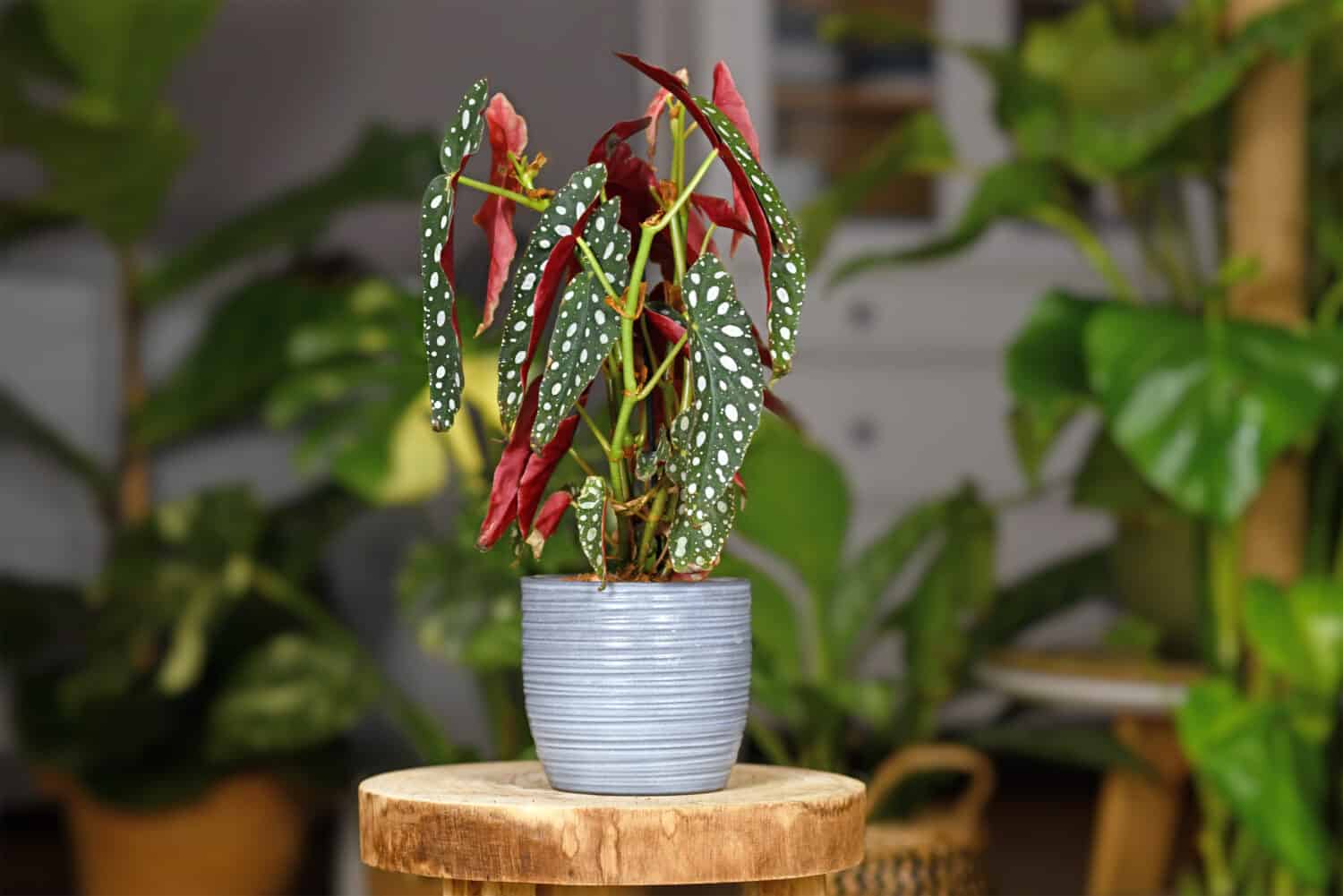
The polka dot begonia is a tropical rare houseplant you should buy if you find it in stock and healthy.
©Shadow Inspiration/Shutterstock.com
Our last plant on our rare plants you should buy list is the polka dot begonia. It’s easy to grow and adds a splash of color to your home. As the name suggests, polka-dot begonias have green and white polka-dotted leaves with shades of red, orange, or pink. This plant is native to Brazil and there are multiple varieties, some rarer than others. The main reason the polka dot begonia is a rare houseplant is because of supply and demand. Many people want this lovely plant, which spikes prices!
Where to Find Polka Dot Begonia
Although polka dot begonias are considered rare, they are easier to find than most of the plants on our list. Still, if you see this rare houseplant, you should buy it before demand spikes again. Polka dot begonias can be purchased in some large name-brand garden centers, but they aren’t always in stock. Sometimes, these plants are sick! Garden centers attached to grocery stores don’t always take care of these plants properly, so always check for bugs and diseases before purchasing.
Caring for Polka Dot Begonia
The polka dot begonia is a picky rare houseplant that needs the right conditions to thrive and flower. However, when you do everything right, these lovely plants can grow many impressive large silver spotted leaves. While polka dot begonias can be grown outside in USDA zones 9 to 11, they are best taken care of indoors as you can monitor and change their humidity conditions. Polka dot begonias love humidity and dry out quickly.
To increase humidity, you can place your rare houseplant in a warm and humid room like the bathroom or mist it occasionally. A sign that your begonia needs moisture is the browning of the leaves. While these plants are slow growers, they need space. Repot as your houseplant grows, especially if you notice less foliage.
Summary of 8 Rare Plants You Should Buy If You Find Them
| Rank | Rare Plant |
|---|---|
| 1 | Monstera Albo Variegata |
| 2 | Black Gold Philodendron |
| 3 | Philodendron Gloriosum |
| 4 | Monstera Obliqua |
| 5 | Queen Anthurium |
| 6 | Pink Princess Philodendrons |
| 7 | Pseudolithos Cubiformis |
| 8 | Polka Dot Begonia |
The photo featured at the top of this post is © Amovitania/Shutterstock.com
Thank you for reading! Have some feedback for us? Contact the AZ Animals editorial team.







